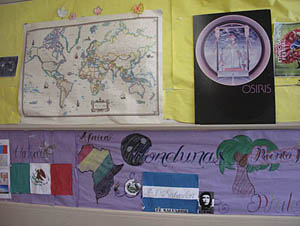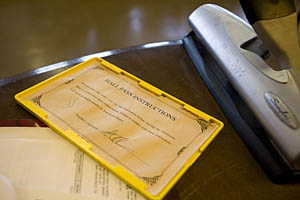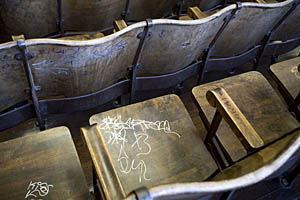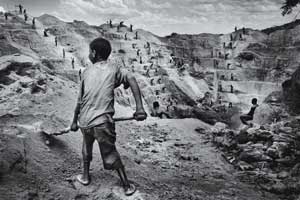
Photo: Kristina Rizga
Mission High School teacher Jenn Bowman has been trying to educate 10th graders about the Scramble for Africa using Belgian King Leopold II‘s brutal colonization of the Congo as a case study. Too bad the “Modern World History” textbook isn’t helping. How can the textbook’s “Imperialism” section end with a nearly equal number of both positive and negative consequences of terrible events? “At its core, Imperialism is an act of aggression. Finding positive impact in it is like looking for positive outcomes in a rampage of a serial killer,” she says.
That’s why she got up at 5 a.m. that morning to write a letter to the textbook publisher, Bowman tells her students. She reads her letter aloud, and then uses it to discuss the meaning of “Eurocentric Worldview,” a new term for this class. She discusses writing too, asking students to critique the letter’s thesis, evidence, and conclusions. “If you were writing a letter to our textbook publisher, how would you review their treatment of Colonialism?” she asks. “How would you organize your arguments? How many sentences do you need in the first paragraph?”
“Ms. Bowman, were you writing political letters in your punk-rock days too or just going to a bar and yelling at people?” Pedro asks at one point. “Both,” she laughs.
“Ms. Bowman is so political!” Rina complains to me softly as she hunches over her desk. Suddenly she sits up straight and asks, “Ms. Bowman, in those protests in Egypt, were high school students on the streets too?” “Absolutely!” Bowman answers. “I wonder what they’re doing in Egypt right now,” a student at the front of the classroom asks. “I wonder,” Bowman says, as she walks toward a student in the back.
Editors’ Note: This education dispatch is part of an ongoing series reported from Mission High School, where education writer Kristina Rizga is embedded for the year. Read more: Mission High School students talk about education reform and grade the film “Waiting for Superman. Plus: Sign up for the weekly newsletter “In the Mix” to get all of the latest Mission High dispatches.
















